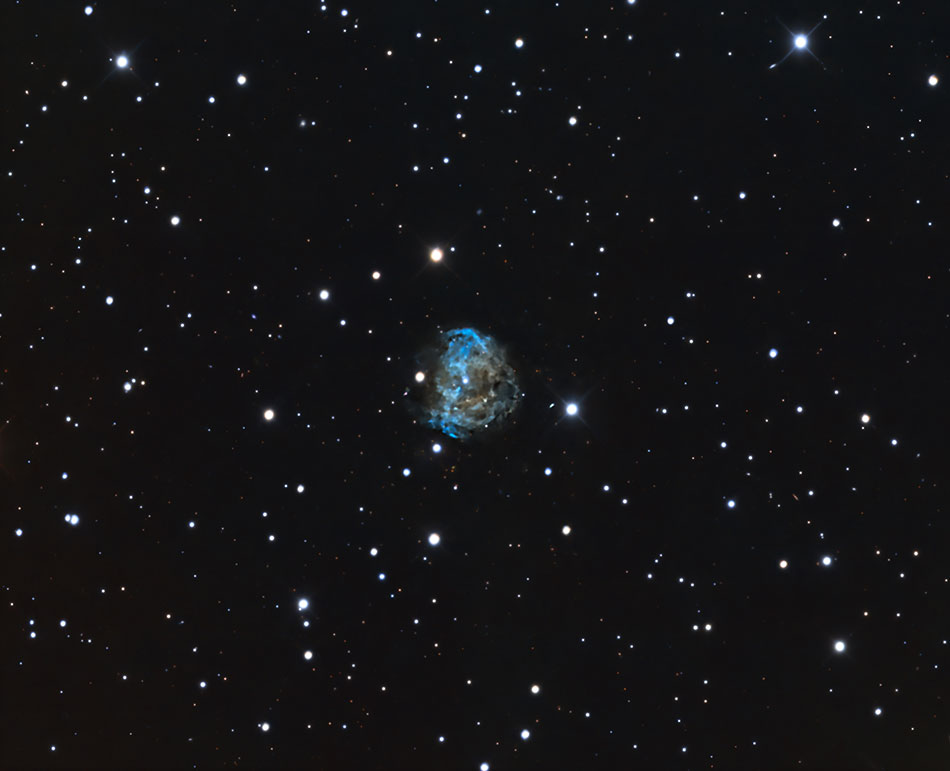Kohoutek 1-16 (K1-16) Planetary Nebula in Draco
Image Credit: Omar Radwan - Image Date: May 2024
Kohoutek 1-16 1
Observations of the central star within the planetary nebula Kohoutek 1-16 reveal it to exhibit low-amplitude pulsations when subjected to high-speed photometry. The primary pulsation period is approximately 28.3 minutes, with a semi-amplitude typically around 0.01 magnitudes. Despite this regularity, additional periodicities occasionally manifest in power spectra derived from light curves, and on certain occasions, abrupt transitions into or out of a state devoid of discernible variations have been documented. This phenomenon, termed 'mode switching', is reminiscent of behavior observed in some nonradial pulsators of the ZZ Ceti type. However, given its effective temperature surpassing 80,000 K, K1-16 is deemed too hot to fit the ZZ Ceti classification. Spectral and photometric analyses indicate a strong resemblance between the central star of K1-16 and the previously identified hot pulsator PG 1159-035. These parallels suggest a novel mechanism of pulsational instability applicable to extremely hot degenerate or predegenerate stars. It is anticipated that as K1-16 undergoes evolutionary contraction, its pulsation period will decrease at a rapid rate, potentially detectable within a span of approximately 2 years
1 Grauer, A. D., H. E. Bond (1984): https://ui.adsabs.harvard.edu/abs/1984ApJ...277..211G/abstract
Observations of the central star within the planetary nebula Kohoutek 1-16 reveal it to exhibit low-amplitude pulsations when subjected to high-speed photometry. The primary pulsation period is approximately 28.3 minutes, with a semi-amplitude typically around 0.01 magnitudes. Despite this regularity, additional periodicities occasionally manifest in power spectra derived from light curves, and on certain occasions, abrupt transitions into or out of a state devoid of discernible variations have been documented. This phenomenon, termed 'mode switching', is reminiscent of behavior observed in some nonradial pulsators of the ZZ Ceti type. However, given its effective temperature surpassing 80,000 K, K1-16 is deemed too hot to fit the ZZ Ceti classification. Spectral and photometric analyses indicate a strong resemblance between the central star of K1-16 and the previously identified hot pulsator PG 1159-035. These parallels suggest a novel mechanism of pulsational instability applicable to extremely hot degenerate or predegenerate stars. It is anticipated that as K1-16 undergoes evolutionary contraction, its pulsation period will decrease at a rapid rate, potentially detectable within a span of approximately 2 years
1 Grauer, A. D., H. E. Bond (1984): https://ui.adsabs.harvard.edu/abs/1984ApJ...277..211G/abstract
